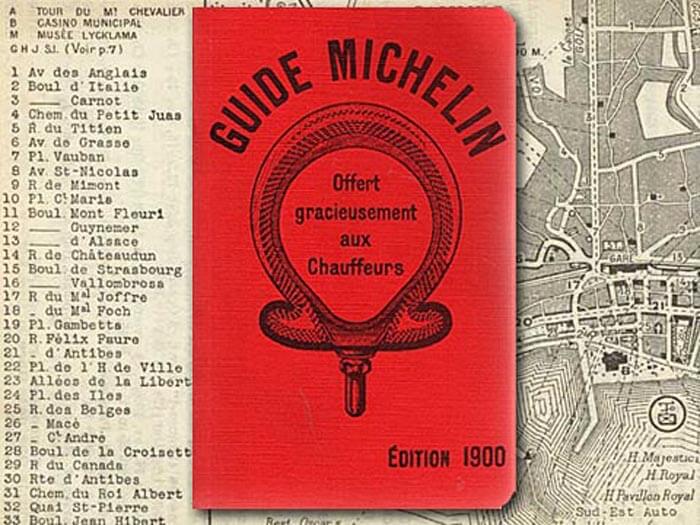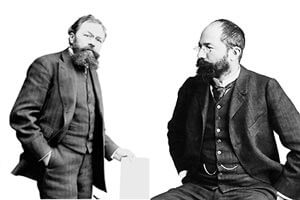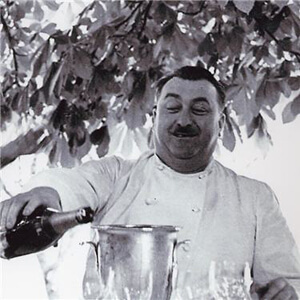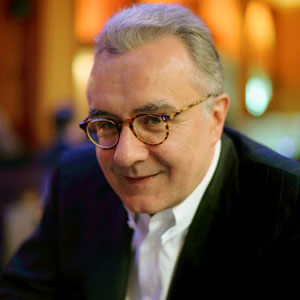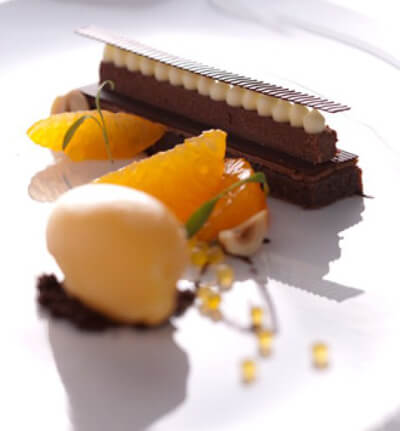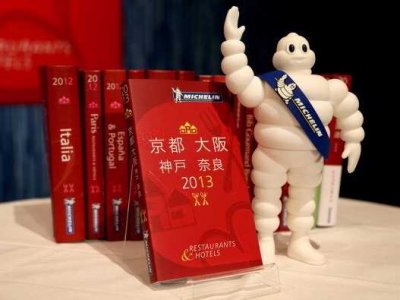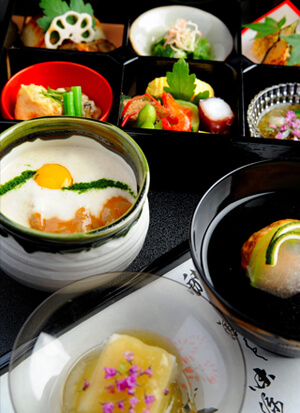Michelin Guide – From Past to Present
At the end of 19th century one invention changed the way we live forever. It was a car. Many thought that this expensive, noisy, dangerous invention will not live long. Michelin brothers thought just the opposite. They knew that a car will change the way we travel. They knew that once far destinations will now be much closer and they knew that going on a trip will be easier than before.
In year 1900 only few thousand cars were driving around France. But that did not stop Andre and Edouard Michelin to offer a small guide to improve mobility for the growing number of car owners. Of course their first goal was to encourage the development of the car industry, and consequently, the demand for tires and other Michelin products.
First blue Michelin guide was printed in 35 000 copies and it was handed out at no charge to motorists. Guide was filled with practical information and advices such as how to repair a flat tire, where to fill gas, in which hotels to sleep and other practical information.
The company continued to issue Guide each year, and special attention was put on data accuracy and appearance of the booklet. So the first few editions were printed with fine engravings, while road maps were inserted in the back cover. At the beginning of the century, there were not so many gas stations and car services, so to fill up the guide, Michelin gradually added lists of hotels and restaurants. In these early editions, the Michelin brothers invented a formula that guarantees success and even for present guides.
Michelin Guide becomes must have item
Soon the number of cars was increasing and so did the number of requests for the Guide. In 1908 Michelin Guide went international, first in Belgium and then in UK in 1911. In 1920 Michelin Guide went commercial. As the story goes, told by the Michelin brothers themselves, the discovery of a lopsided garage workbench propped up on a stack of Guides convinced them that people only respect what they pay for.
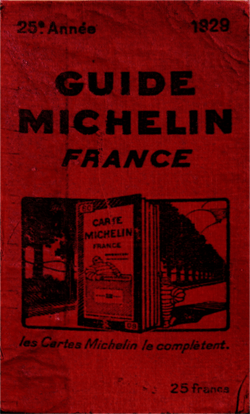 Consequently, there would be no more free Michelin Guides. First price was 7 French francs and advertising was removed from the Michelin Guide. In France, the popularity of the Guide grown so much that every new release went straight to the bestseller list.
Consequently, there would be no more free Michelin Guides. First price was 7 French francs and advertising was removed from the Michelin Guide. In France, the popularity of the Guide grown so much that every new release went straight to the bestseller list.
In the year 1923 Michelin Guide added “Recommended Hotels and Restaurants” section, and in 1926 star system was introduced. Since that day Michelin Guide developed practice of ranking restaurants and two and three star category were introduced in 1931 and the cover page was changed to red color which stayed till today.
The criteria behind the stars was added in 1936 and it describes restaurants in a way that a one star restaurant is a very good restaurant in its own category; two star restaurant is excellent cooking, worth a detour; and three star restaurant is exceptional cuisine, worth a special trip.
The same year a satisfaction questionnaire was included, so that readers can comment on the choice of restaurants. Today more than 45 000 letters and emails are sent to Michelin Guide offices and each is answered.
Michelin Guide and its role in second world war
During the World War II Michelin Guide was not printed. But Michelin Guide played a key role in the liberation of France and helped Allied Forces progress faster from the beaches of Normandy through to Germany. In the year 1944 when the Allied forces were planning the D Day invasion they were concerned with one big problem.
The traffic signs in occupied France were destroyed and removed. Since that would be a problem for English and American troops, it was decided that the 1939 edition of Michelin Guide would be reprinted. The complete Guide with all detailed and up to date maps was printed in Washington DC and delivered to the Allied officers.
So, on the day of the invasion the troops that would liberate of towns like Cherbourg, Caen and St Lo, landed with Michelin Guide in hand. After the liberation of Paris more than two million maps were printed with maps of north and east of France, Belgium and Germany which helped Allied forces to progress even faster. Le Guide Michelin has definitely become a legend.
Beginnings of creative cuisine
After the World War II cars were not only for the rich and Saturday was now a day off, so people began to take advantage of the newly created weekend to have lunch or dinner in a restaurant and Michelin Guide played a big role in this trend. Michelin’s 3 star system was further extended to cover other European countries and although the system was dropped for a while, the 1951 edition saw the return of the three-star rating system, but with fewer restaurants achieving maximum stars.
The next decade was marked by the rise of culinary stars. The first of these was Fernand Point, which in its legendary restaurant Le Pyramide in Vienneu at Lyon created a gastronomic mecca, and was visited by gourmets from all over the world. Since 1925 till 1955 when he died, Point perfected a distinctive blend of sophisticated Parisian and French traditional cooking and thus laid the foundations of modern gastronomy.
Point got his third Michelin star in 1933, and in the last decade of his work he has trained many future Michelin stars, including Bill and Bocuse, Toisgros and Chapel. In early 70’s, in France only a dozen restaurants had three stars, but they were stepping stones for apprentices, such as Ducasse and Vongerichten, who will develop an individual style of contemporary creative cuisine.
Michelin Guide inspectors
Mysterious profession of Michelin inspectors was thoroughly developed in the period before World War II, thus laying the foundations on which rests a guide today. Michelin reviewers are anonymous, they never reveal their purpose of visit to the restaurant and they pay their checks.
Their secrecy is so big that even some of the top ranked officials in Michelin don’t know the true identity of the “inspectors” and they are advised not to disclose what they do for a living. Michelin has also refused to allow its inspectors to talk to the press.
Each “inspector” writes a review at the annual “stars meeting” and these reviews are distilled into the rankings of one, two, three or no stars. In France each year when the guide is published, it sparks a media frenzy which can be compared to Annual Academy Awards for Movies. Media and people debate likely winners and who will lose a star or who will gain a star.
Michelin main feature is that unlike other guides, it evaluates only food quality. In doing so, it is very important to distinguish the classification of individual hotel or restaurant since classification refers to the service, decor, ambience and everything that, with food, makes a visit to the restaurant enjoyable experience.
Many luxurious restaurants don’t have Michelin stars, simply because the quality of food is not at that level. Could be great, but it is not what you would expect from such a luxurious restaurant.
Michelin Guide spreads across the ocean
Americas first edition of the famous Guide, dedicated to New York, sparked much attention, but also controversy. Some admired restaurants were omitted (Cafe des Artistes, The Four Seasons), while some not so worthy restaurants, by American standards, were awarded with stars.
Many could not understand the philosophy that restaurants are evaluated solely on food, so they dropped the critique that the inspectors have favored French cuisine and French chefs. The critique was placed towards Guide favoring the restaurants that emphasized formality and presentation rather than a casual approach to fine dining.
In 2007 the first edition of Guide to San Francisco and the surrounding area was published, and just like in New York it caused a big splash. The city’s rich, innovative culinary spirit gave only one restaurant with three stars (Thomas Keller’s French Laundry). Some culinary legends were weakly rated, and the Guide left out some names that determine a sophisticated eclectic style of cooking in San Francisco area.
The third year in the United States for Michelin Guide was much calmer, because somewhat “Americanized” editions of the New York and San Francisco Guides calmed critics (namely, introduced division into cuisine types, recommendations for brunch and late dinners, reviews of cheaper restaurants etc.). New releases for the Los Angeles and Las Vegas were received with excitement, but with much less anger.
Nervousness now moves to Chicago, Washington and Boston. Michelin is no longer considered exclusively French but larger international institution, whose influence extends far beyond Europe and the United States.
Tokyo becomes new culinary mecca
In 2010 Michelin Guide ranked Japan as the country with the most starred restaurants. This sparked critiques over whether these high rankings are merited for Japanese restaurants, whether Michelin guide was too generous in giving out stars to gain an acceptance with Japanese customers and to enable the parent tire selling company to market itself in Japan. Some Japanese chefs were surprised after they were awarded the stars, claiming they did not expect one.
Specifically, all 150 restaurants included were rated with stars, which made Tokyo the world’s leading gastronomic metropolis (Paris with 78 and New York with 42 restaurants with Michelin stars). The next stop in the Michelin conquer is Asia and Australia, Shanghai, Hong Kong and Beijing. Guide does not give up on Europe either, along with Paris and London Guide, there are plans for third city guide and inspectors will focus on Scandinavia and the cities of Eastern Europe.
Responding new customer expectations, the Michelin Guide continued to innovate, creating the Bib Gourmand category of small restaurants offering good value for money, followed by the similarly positioned Bib Hotel symbol.
In 2000, the Guide enhanced its presentation, adding a brief description of each hotel and restaurant to enrich the universal language of symbols used throughout, and after all these years, reader feedback is more important than ever, confirming the validity of the Michelin choice and helping it to improve. As ever, the goal is to make traveling easier and help readers discover each region’s unique features.

